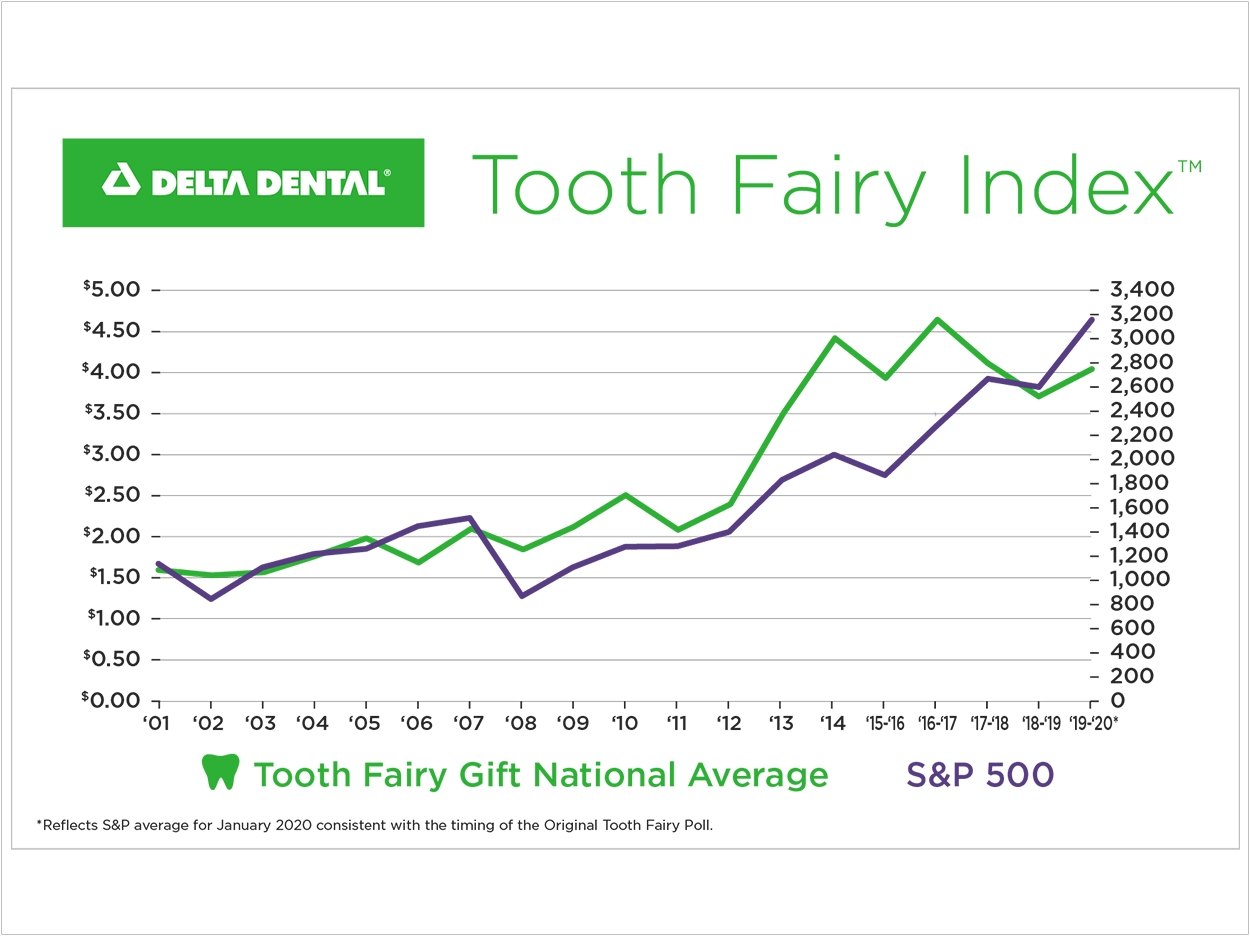
Kids are getting more for their missing teeth these days, as Delta Dental’s Original Tooth Fairy Poll shows a 33-cent increase in the average gift since last year for a total of $4.03 per tooth.
“The Tooth Fairy is one of healthcare’s most powerful tools for teaching children about their oral health. By celebrating a lost tooth, children begin to learn the importance of their oral health in an engaging and fun way,” said Jennifer Elliott, chief marketing officer for the Delta Dental Plans Association.
“At Delta Dental, we continue to provide tools for parents, families, and communities to educate young Americans about the importance of their oral health, and our twenty-second year of this survey shows our dedication to keeping the Tooth Fairy a vibrant and active part of oral health education,” said Elliott.
Delta Dental has been analyzing the Tooth Fairy’s annual giving trends in the United States since 1998. The newly disclosed value of a lost tooth has more than tripled since its inception, when the value of a lost tooth was $1.30 as it reaches its fourth highest payout in the history of the survey.
The Original Tooth Fairy Poll has typically mirrored the economy’s overall direction, Delta Dental says, tracking with the trends of Standard & Poor’s 500 Index for 15 of the past 18 years.
Last year, a single lost tooth was valued at $3.70, making this year’s $4.03 total an increase of nearly 9%. Over the same time period, the S&P 500 also experienced growth with a 22% increase, reaching its highest average since the inception of the Original Tooth Fairy survey.
At $4.35, the Northeast led regions in the United States in highest average monetary gift for a lost tooth. The West led the previous two years but dropped 22 cents to $3.97. Meanwhile, the South’s $4.01 total tracks most closely to the national average. And at $3.71, the Midwest increased 74 cents over last year but remains lower than the national average for the second year in a row.
The Original Tooth Fairy Poll was conducted between December 30, 2019, and January 11, 2020, among a nationally representative sample of 1,000 parents of children between the ages of 6 and 12. Its margin of error was +/–3%.
Related Articles
Cash on Hand Determines What the Tooth Fairy Gives
Tooth Fairy Gifts Down 43 Cents in 2019
White Paper Tackles Oral Health Literacy in the United States












